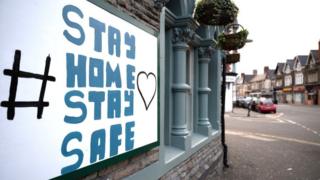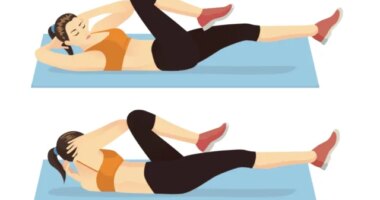 Image copyright Getty Images
Image copyright Getty Images We have gone weeks without seeing friends and family, without school, holidays or even being able to go to work.
On 10 May, Boris Johnson is expected to address lockdown measures, although people should “not expect big changes.”
So what can be lifted and when?
Why can’t we just lift lockdown?
This virus remains massively contagious. Before lockdown, one infected person passed it onto at least three others on average (the so called R-number).
And less than 5% of the UK population is estimated to have been infected. Or to put that another way – more than 63 million are still vulnerable.
If we just lift the lockdown, then another explosive outbreak is inevitable.
Is there any wiggle room?
The goal of lockdown has been to cut infections by around 70% to force the R-number below one (the point at which the outbreak starts to decline). That has been achieved.
However, it is only just below one.
“There isn’t much wiggle room,” a source within the government’s science advisers told me, adding the country “can’t make a huge number of changes”.
One set of modelling suggests opening schools – and nothing else – would be enough to almost tip us back into rising cases.
What will ‘test, track, trace’ achieve?
The aim is to create more “wiggle room” – you identify cases and then perform rapid contact tracing and put those at risk in quarantine.
This strategy, also called “seek and destroy”, will be supported by a voluntary smartphone app which will help identify contacts.
The more successfully this is done, the more it will reduce the ability of the virus to spread and the more restrictions can be lifted on day-to-day life.
“At the moment you need, on average, a 60-70% reduction in social interactions to stop the outbreak increasing,” said Dr Kucharski.
“If we can get that down to 30% that gives you a lot more to play with.”
But even this is not life as normal and other measures would still be needed to keep the disease in check.
“It is a more moderate version of where we are now,” said Dr Kucharski.
- When will the outbreak end and life get back to normal?
- How does contact tracing work and is my data safe?
What about protecting those at risk?
Another strategy proposed by some is “enhanced shielding”.
Instead of trying to suppress the coronavirus across every section of society, you could instead aim to stop it completely for the most vulnerable.
Prof Mark Woolhouse, from the University of Edinburgh, said: “Very crudely, for 80% of us who are not vulnerable this is a nasty virus, but it wouldn’t overwhelm the healthcare system and it wouldn’t lock down society.
“If we really bolster that shielding, make a very strong shield indeed, then it buys you a lot more room and it may mean you can relax some measures permanently.”
That would mean all staff hospitals, care homes or anyone visiting those deemed vulnerable being regularly tested to ensure they are clear of the virus. Ideally, antibody tests would prove they are immune to it.
The danger is, having more virus circulating in the community could put those “shields” under intense pressure.
Which lockdown measures could be lifted?
Some restrictions are less risky in terms of spreading the virus.
“Essentially we’ve got a lot of not very good options – it won’t be one day and everything will change, but things could open up,” Dr Adam Kucharski, from the London School of Hygiene and Tropical Medicine, told the BBC.
Dr Kucharski argues lifting different restrictions can be put into three broad categories: Those with low, moderate and substantial risk of increasing transmission of the virus.
Low risk includes exercising outdoors, which has been restricted in some countries.
Wales has already announced that from 11 May, people will be able able to exercise more than once a day.
Moderate risk would include letting some non-essential shops re-open or having occasional gatherings with people outside the household.
Substantial increases could come from lifting advice to work from home, reopening schools or isolating sick people and quarantining households.
“I think the order things went in will be reflected in the order things will be lifted,” he says.
There remains a nervousness within the scientific advice to government about lifting restrictions in areas, like pubs, whose whole purpose is to bring people together.
And there is an emerging question around primary schools as young children, some studies suggest, cannot be infected as easily.
When could restrictions be lifted?
There is a decision about how far we go with suppressing the virus now we’ve passed the peak.
We could drive levels down as low as possible. That will greatly limit the ability of the virus to bounce back in a second wave and make testing and contact tracing more likely to be effective. The trade-off is maintaining the lockdown for longer.
Or we could exit lockdown now and accept having a higher number of cases, which creates its own problems.
What could shift the balance?
The biggest thing that could come along is a vaccine, as immunising people would mean there was no need for any social distancing measures. That is thought to be more than a year away.
Failing that, the concept of herd immunity may kick in when around 70% of the population have been infected and the virus can no longer cause large outbreaks.
Effective drugs would also make a huge difference if they could stop Covid-19 progressing from a cough or fever into a serious disease needing intensive care.
We might get closer to normality, or at least normality for some, in the months to come. But we are all still in this for the long haul.
- Download the BBC News App for all the latest headlines.
Follow James on Twitter.
Source: BBC News – Health










